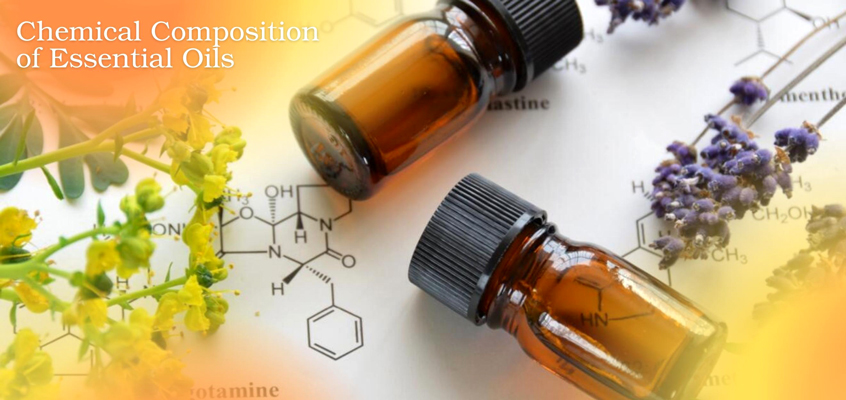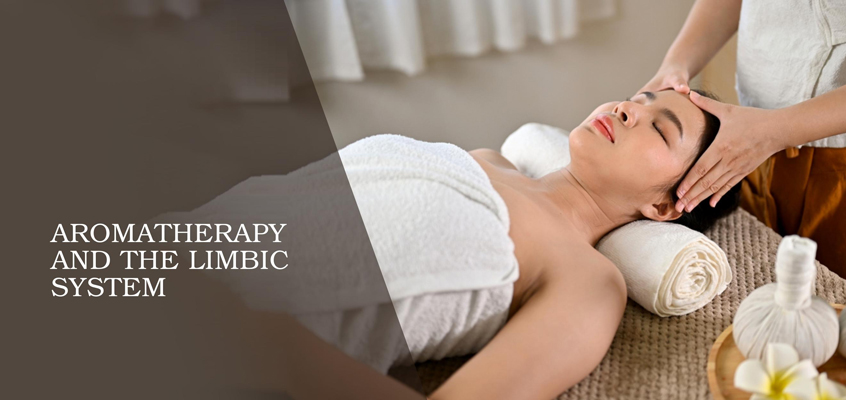The Science Behind Essential Oils: Exploring Chemistry and Benefits

Recently, essential oils have become incredibly popular due to their perceived therapeutic benefits and fragrant appeal. These oils, which come from plants, are concentrated extracts that hold onto the inherent scent and additional components of the original substance. Even though essential oils have been used in aromatherapy and traditional medicine for generations, it's important to approach them knowing the science underlying their effectiveness. Without making grandiose promises, we'll explore the chemistry and advantages of essential oils in this blog.

Chemical Composition of Essential Oils:
Have you ever wondered what gives essential oils their magical aroma and therapeutic benefits? Let's dive into the fascinating world of essential oil chemistry! These natural wonders are composed of volatile compounds extracted from plants. Each essential oil is a unique blend of organic molecules, and their composition determines their scent and potential health benefits.
The backbone of essential oils is made up of two main classes of compounds: hydrocarbons and oxygenated compounds. Hydrocarbons are the simplest, consisting of carbon and hydrogen atoms. They provide the base scent and stability of the oil. For instance, limonene, found in citrus oils, imparts a zesty, uplifting aroma. Oxygenated compounds, on the other hand, add depth and complexity. These include alcohols, esters, ketones, phenols, and aldehydes. Linalool, found in lavender, is an alcohol known for its calming properties. Eucalyptol, present in eucalyptus oil, is a refreshing, respiratory-supporting ketone.
Terpenes, another vital component, contribute to both aroma and therapeutic benefits. They are aromatic molecules found in countless plants, and they give each oil its distinct fragrance. For example, the earthy scent of pine oil comes from pinene, a terpene abundant in coniferous trees. Another noteworthy group is phenols, known for their powerful antimicrobial properties. Clove oil, rich in eugenol, is a prime example. Meanwhile, esters provide sweet, fruity notes, making oils like chamomile and bergamot so inviting.
Understanding the chemical composition of essential oils can help you choose the right one for your needs. Whether you're seeking relaxation, focus, or immune support, knowing the key compounds can guide your selection. So, next time you open a bottle of essential oil, you'll have a deeper appreciation for the natural chemistry that makes it so special. Embrace the aromatic adventure and let nature's chemistry enhance your well-being!

Aromatherapy and the Limbic System:
You may have seen how a certain scent can transport you back to a cherished memory or instantly uplift your mood. This enchanting phenomenon is thanks to a powerful connection between aromatherapy and our limbic system, the emotional center of the brain. The limbic system is like a control center for our emotions, memories, and even some basic instincts.
When we inhale essential oils, their tiny aromatic molecules travel through our olfactory system, which is responsible for our sense of smell. This journey leads them straight to the limbic system, where they trigger a cascade of reactions. The limbic system is home to the amygdala, a region associated with emotions and emotional memories. This is why certain scents can evoke strong feelings or vivid memories.
For instance, the calming scent of lavender can gently coax your mind into a state of tranquility. This happens because the molecules in lavender essential oil interact with receptors in the olfactory bulb, sending signals directly to the amygdala. On the other hand, the invigorating aroma of citrus oils can give you an instant energy boost, thanks to their uplifting effect on the limbic system.
In order to reduce tension, promote relaxation, and foster a happy emotional state, aromatherapy offers a safe and efficient natural solution. Therefore, the next time you diffuse your preferred essential oil or add a few drops to your bath, keep in mind that you're not simply enjoying a pleasing aroma — you're also taking part in a beautiful dance with your limbic system, letting it work its magic on your emotions and memories. Enlist the aid of aromatherapy to help you achieve a state of joyful well-being, and let your senses guide you there!
Topical Application and Skin Absorption:
The wonders of your body are actually influenced by those delightful potions in tiny bottles, have you ever considered them? The outermost layer of your skin called the epidermis, isn't just a barrier; it's a dynamic ecosystem. Within this layer, there are tiny openings called hair follicles and pores. These are the entry points for the active compounds in topical products. Essential oils, for instance, are made up of minuscule molecules that can easily penetrate the epidermis. Once absorbed, they start their therapeutic dance within your body.
Once inside, these tiny molecules embark on a journey. They travel through the dermis, the layer beneath the epidermis, and then make their way into the bloodstream. From here, they can be transported to various parts of your body, spreading their beneficial effects. For example, if you're using lavender oil for relaxation, its calming compounds can travel through your skin, soothing your muscles and calming your mind.
However, it's crucial to remember that not all substances can be absorbed equally. The size and structure of the molecules play a significant role. This is why it's essential to choose high-quality, pure products, especially when using them topically. So, the next time you massage in that favorite oil or lotion, remember that you're not just pampering your skin—you're giving your body a ticket to wellness, one soothing drop at a time. Embrace the magic of topical application and let your skin be the doorway to a healthier, happier you!

Potential Health Benefits and Evidence-Based Studies:
While there may be some health advantages associated with essential oils, it's important to approach them with caution. For example, tea tree oil has exceptional antibacterial and antifungal qualities that make it a significant tool in skin care and wound care. In a similar vein, the ability to relieve headaches and intestinal problems has made peppermint oil popular.
Despite the fact that studies have shown that certain essential oil uses are beneficial, it is crucial to keep in mind that these uses should never take the place of a doctor's orders or other expert healthcare advice. It's important to think of these oils as supplemental tools rather than as a cure-all for medical issues. For complete and individualized care, always seek the counsel of a licensed healthcare professional. Keep in mind that essential oils' genuine effectiveness is found in their ability to supportive role within a broader healthcare regimen.

Safety Precautions and Individual Sensitivity:
Although strong, essential oils must be handled with caution. It's possible for some people to react negatively to certain components in these oils. It's a good idea to perform a patch test before attempting a new one, especially if you have sensitive skin or known allergies. Aside from that, make sure essential oils are stored securely out of the reach of kids and dogs because they may be strong and even dangerous when misused. It is imperative for safety that pregnant women get medical advice before taking any particular oils.
In summary, utilizing essential oils safely is vital to reaping their benefits without experiencing any unintended side effects, even though they may have potential advantages. A professional should always come first when it comes to safety.
Conclusion:
In conclusion, the world of essential oils is rich in both history and science. Understanding the chemical composition and potential benefits of essential oils allows us to use them in a safe and informed manner. While they can be a valuable addition to holistic wellness practices, it's crucial to approach them with respect for their potency and individual variations in sensitivity. By incorporating essential oils into our self-care routines responsibly, we can unlock their full potential in enhancing our physical and emotional well-being.
You May Also Like:
